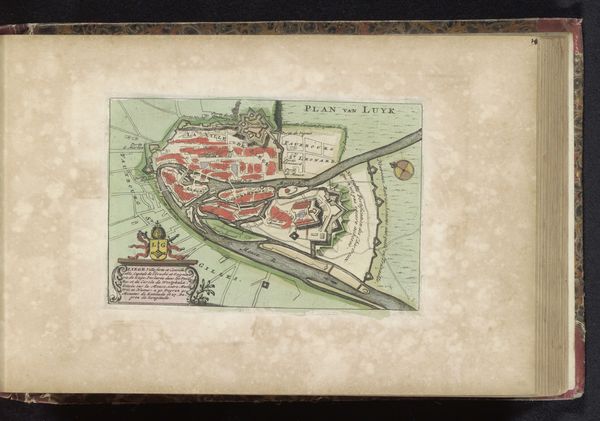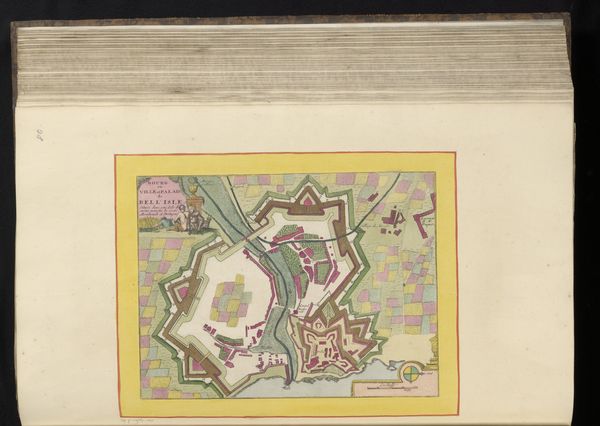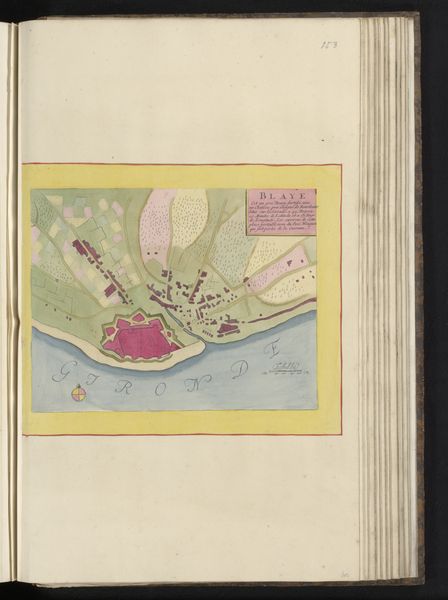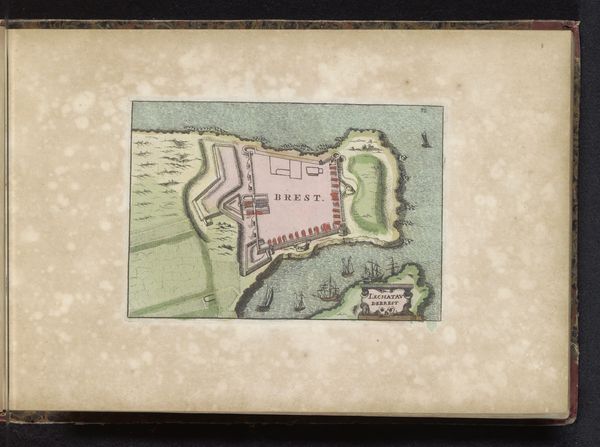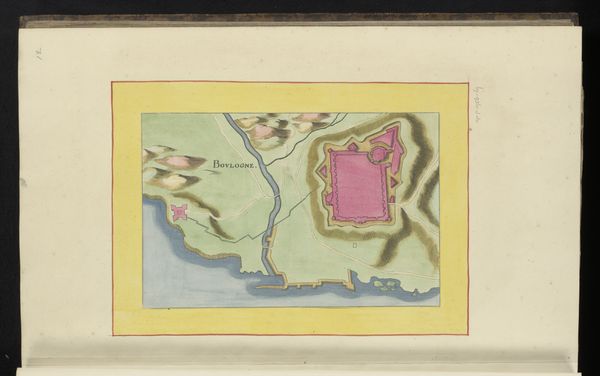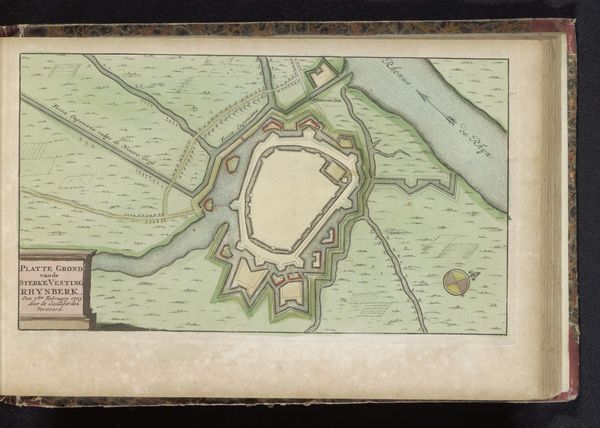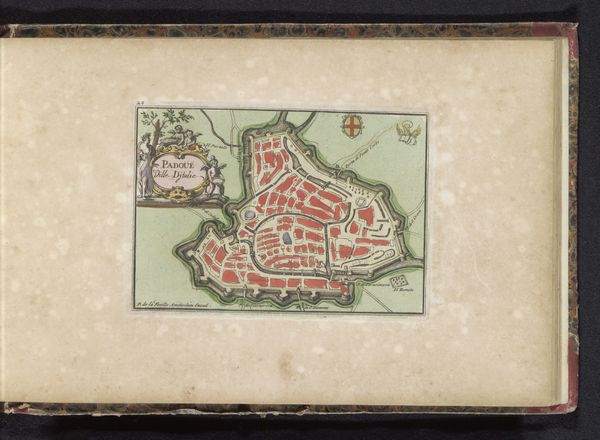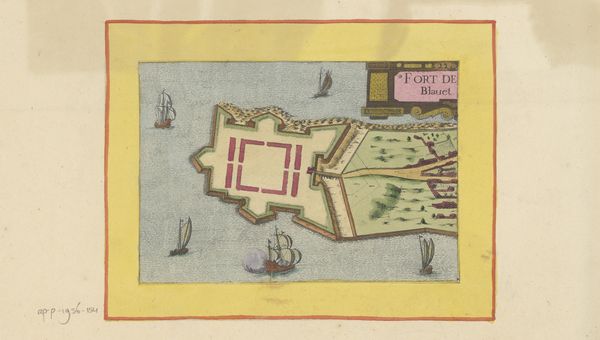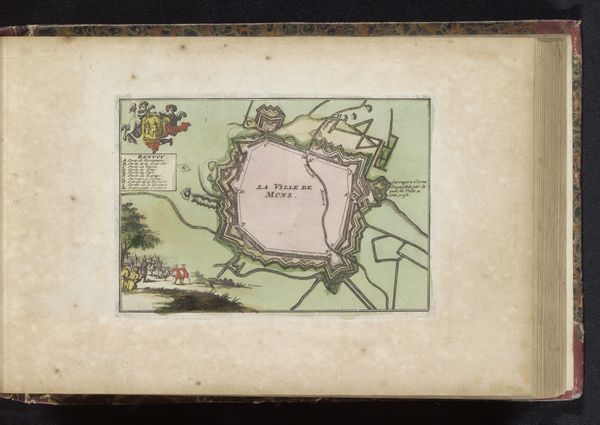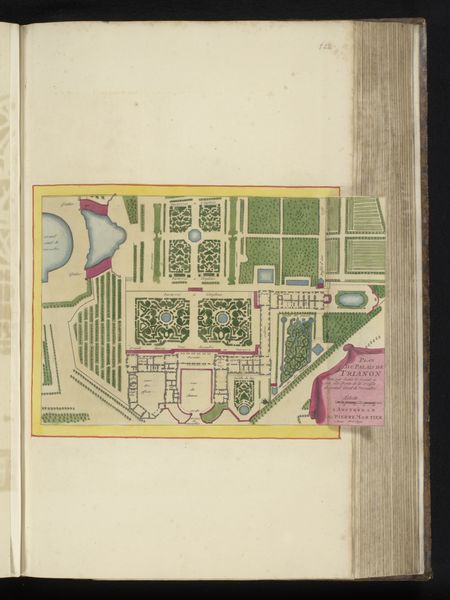
painting, watercolor
#
baroque
#
painting
#
landscape
#
watercolor
#
geometric
#
cityscape
Dimensions: height 186 mm, width 289 mm, height 532 mm, width 320 mm
Copyright: Rijks Museum: Open Domain
Editor: This is a fascinating bird’s-eye view, a "Plattegrond van La Garnache," made in 1657, currently held at the Rijksmuseum. It's rendered in watercolor, seemingly unsigned, giving it a unique anonymous aura. There is something both geometric and slightly dreamlike in the coloring, though I suppose this might actually just be an objective representation of space… How would you interpret the function of a work like this? Curator: Indeed. Beyond a simple visual record, works like this were often politically charged tools. Maps provided critical data for territorial control. Note the walled city, with precise angles and clear boundaries, showcasing military and strategic concerns of the time. It isn’t just art; it’s a document intended to assert authority. Think about the socio-political power linked to possessing and controlling such spatial knowledge. How do you imagine this map could be used in the seventeenth century? Editor: Well, I guess I hadn’t considered the implications of control. I was struck by its aesthetic value as art and the coloring as an expressive choice. Curator: I wonder how this particular city planning was influenced by the Dutch Golden Age. Given its level of sophistication and aesthetic flair, one could ask how La Garnache strategically incorporated elements of design with those of defense, or were the colorful washes used to enhance aesthetic and commercial value? Maps often legitimized colonial expansion and demonstrated power through meticulous rendering. Editor: That makes me wonder whether we could see an evolution in mapmaking with specific intention: initially purely objective records that transitioned into vehicles for more complex ideological messaging. Curator: Precisely! So much can be revealed through looking closely at the historical moment and what those images *did* in their own time. Editor: I'll never look at maps the same way. It's eye-opening to consider their use within cultural and political landscapes.
Comments
No comments
Be the first to comment and join the conversation on the ultimate creative platform.
